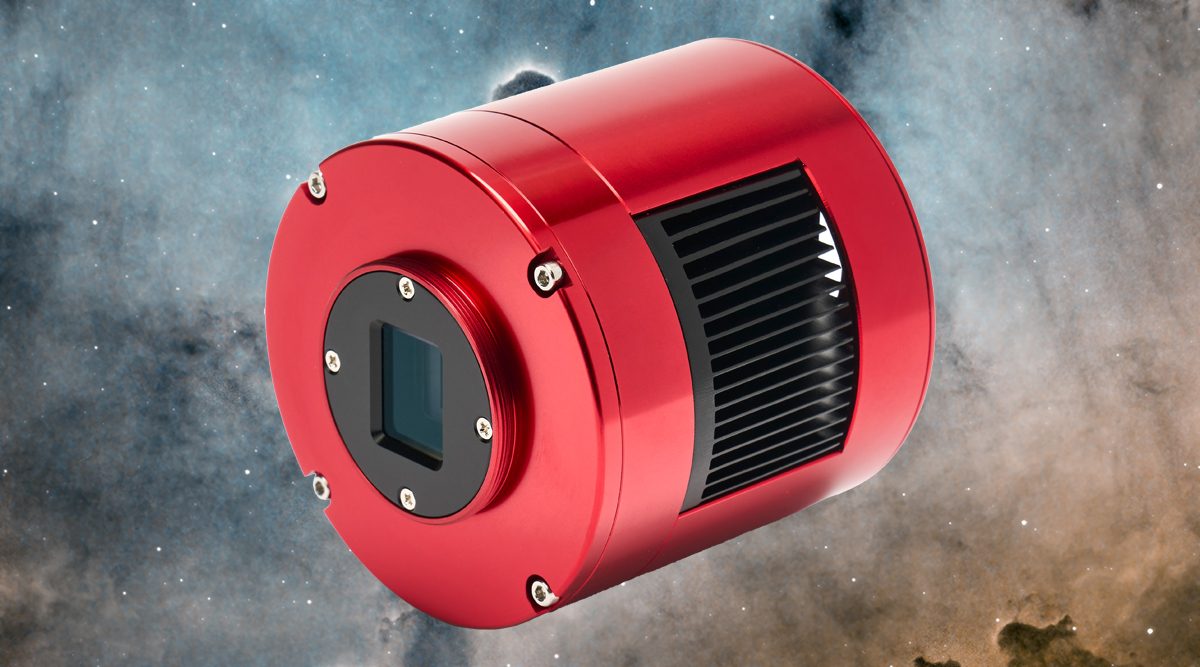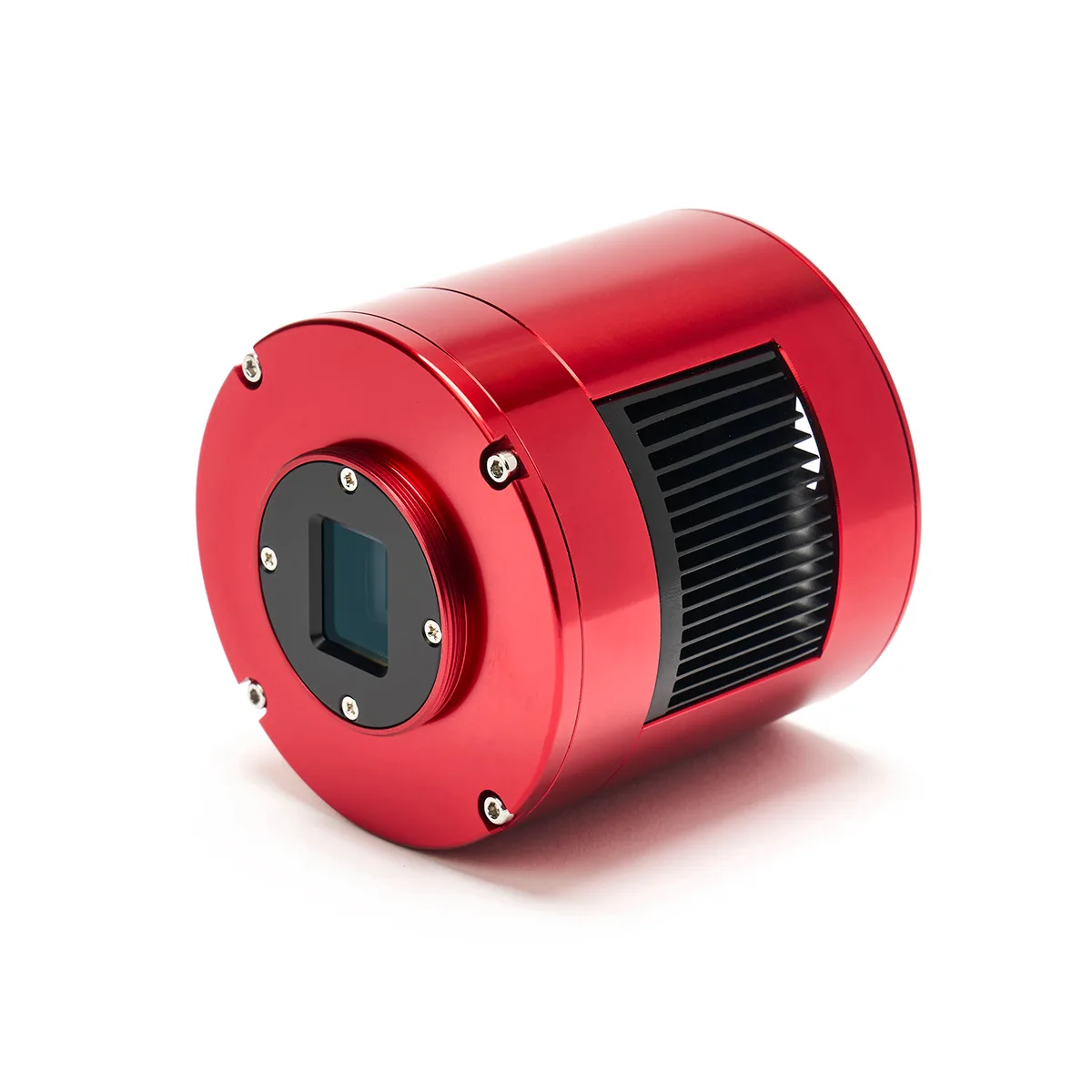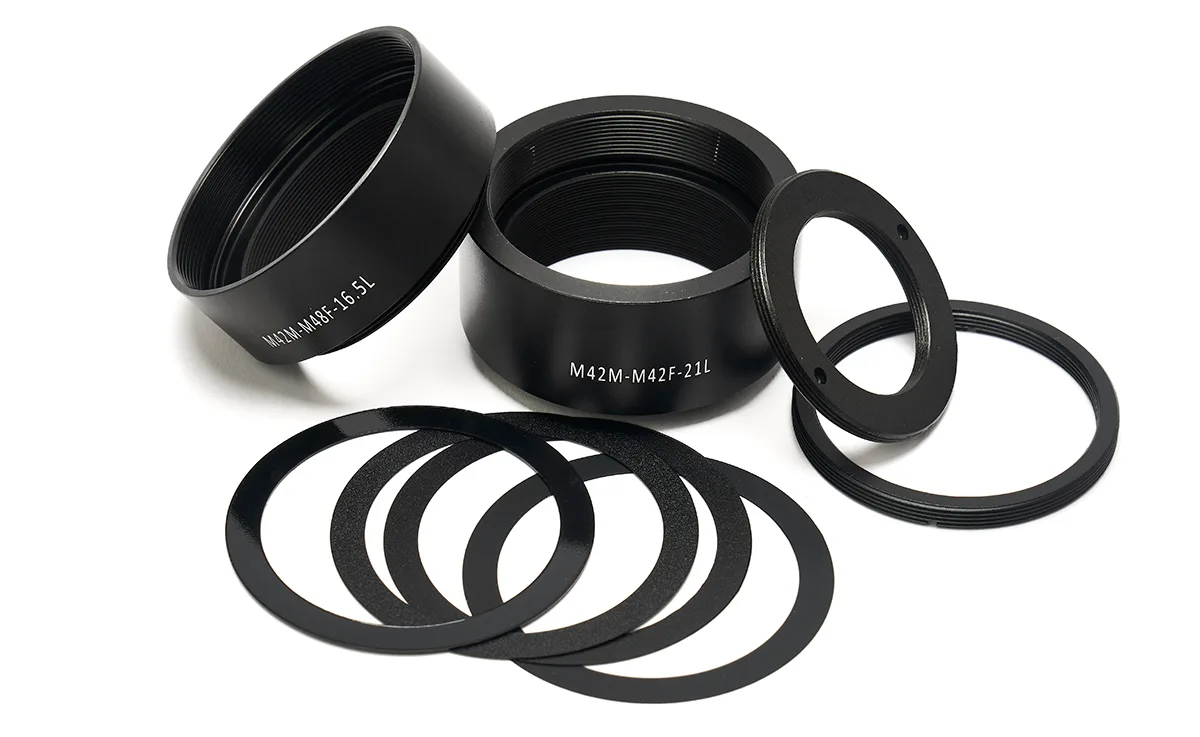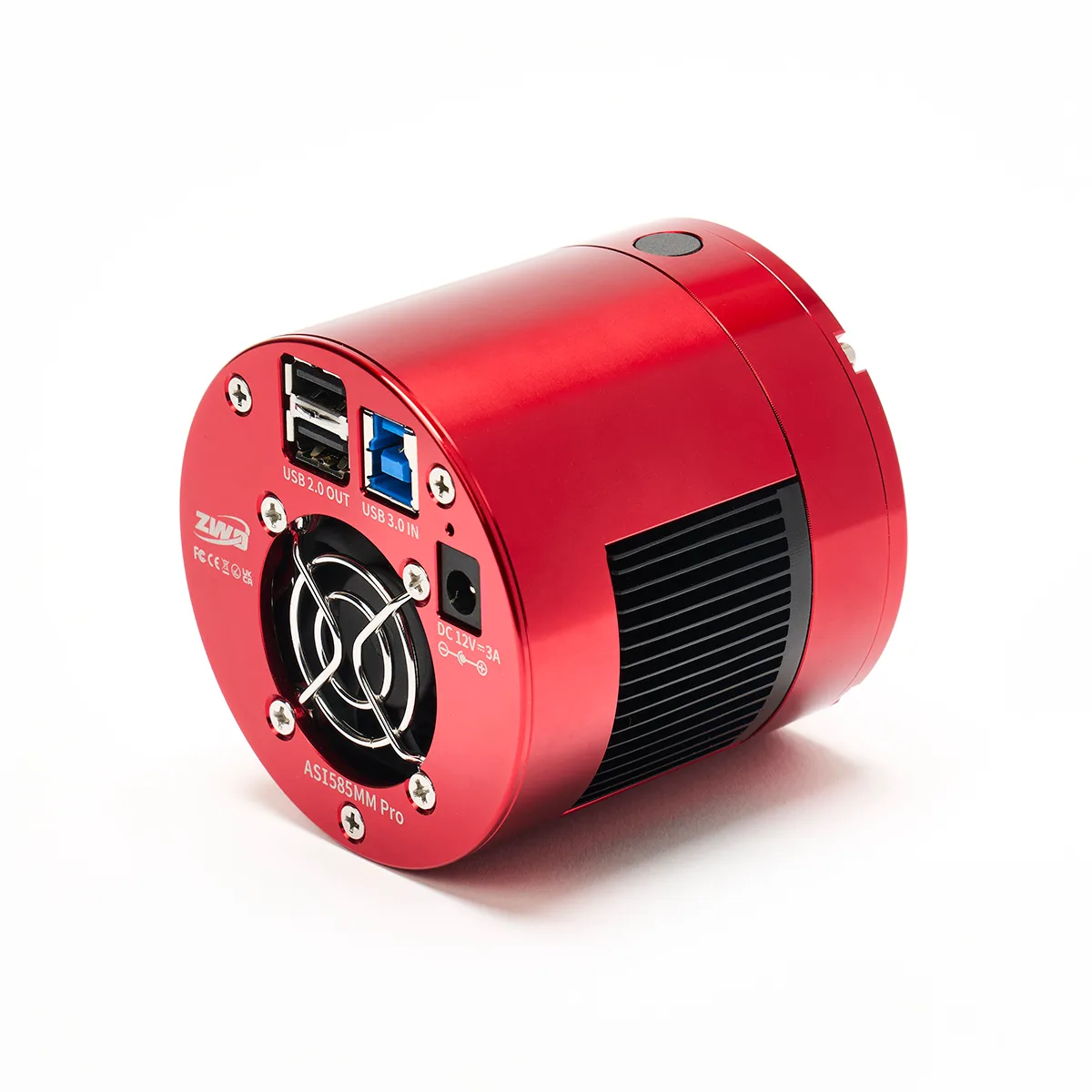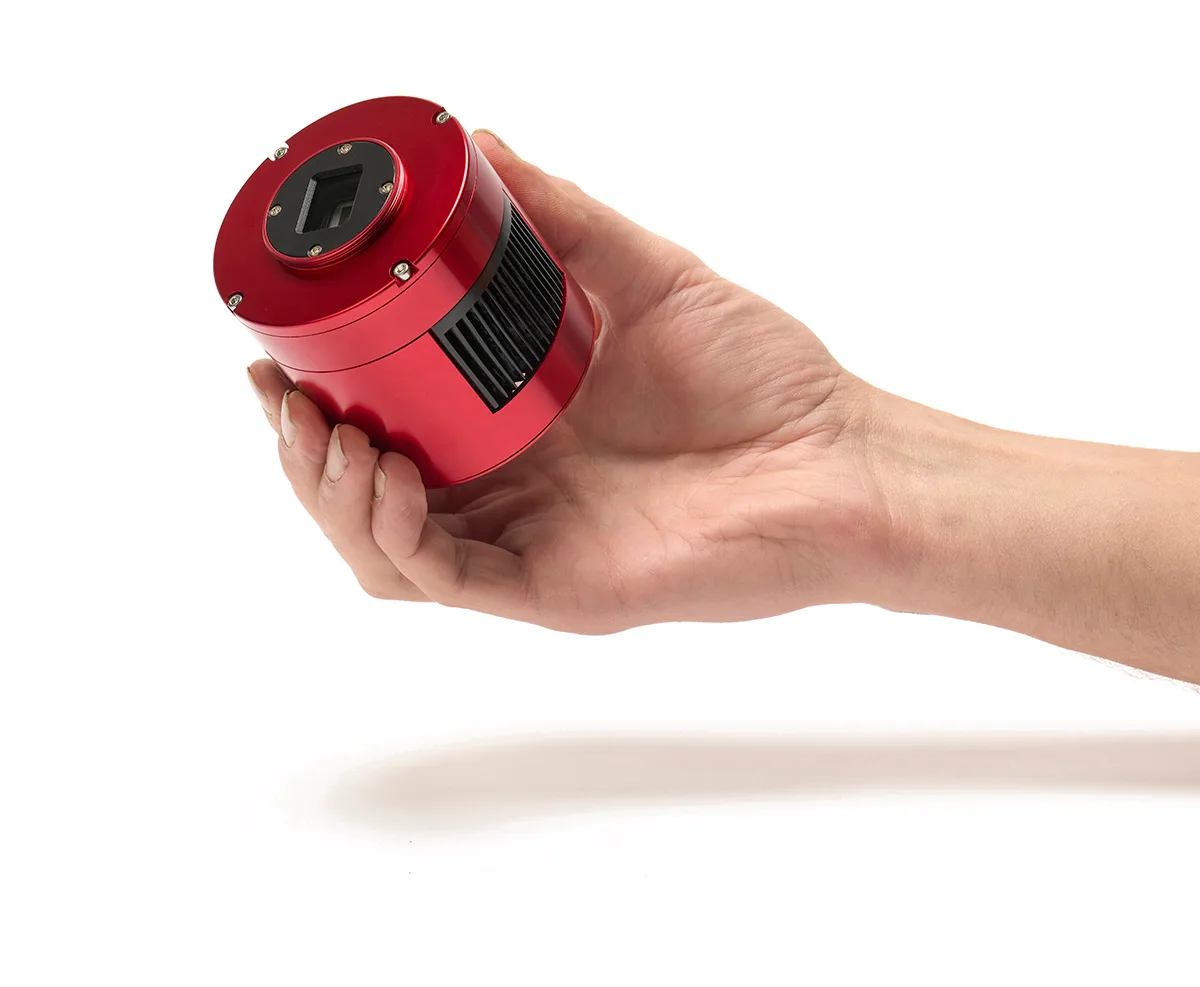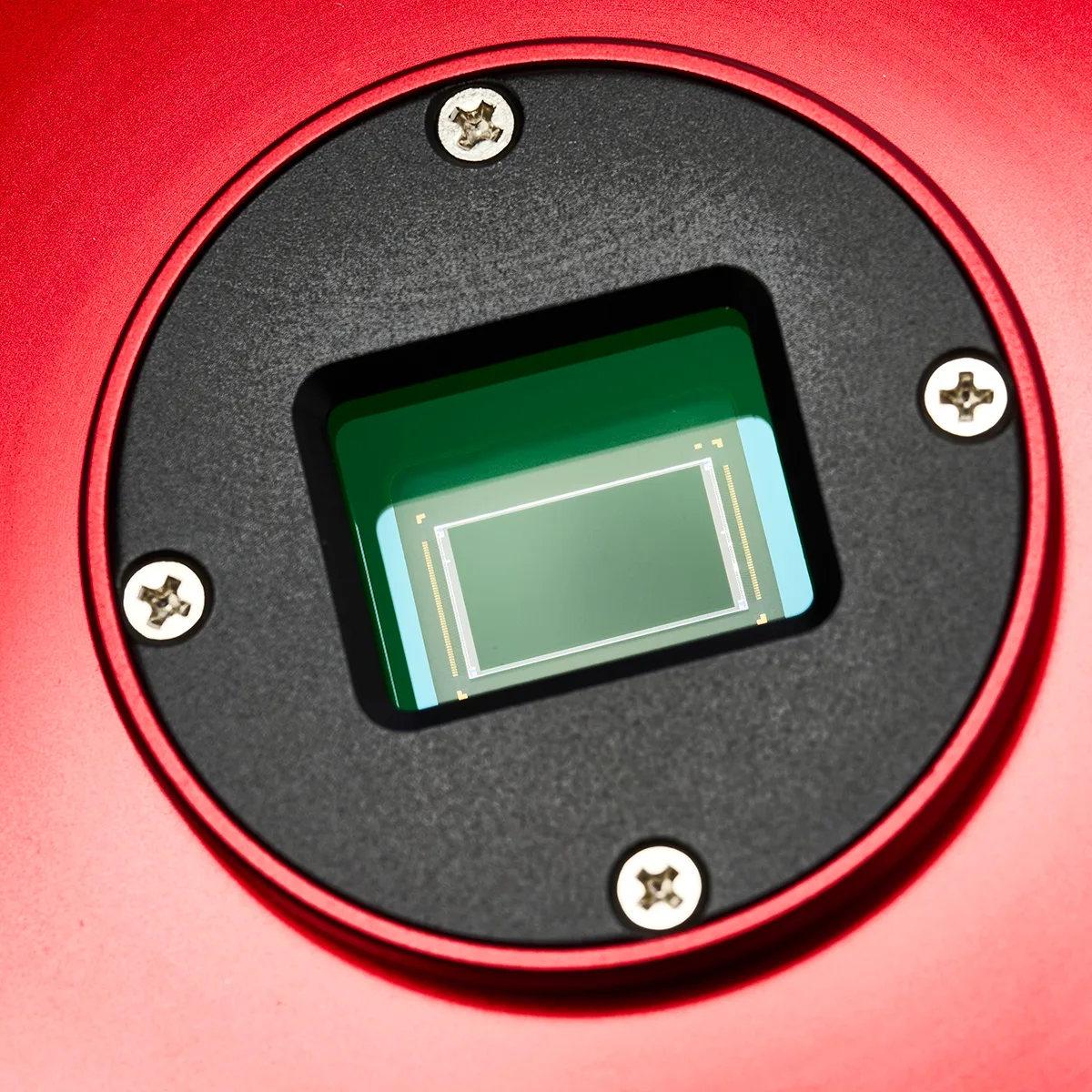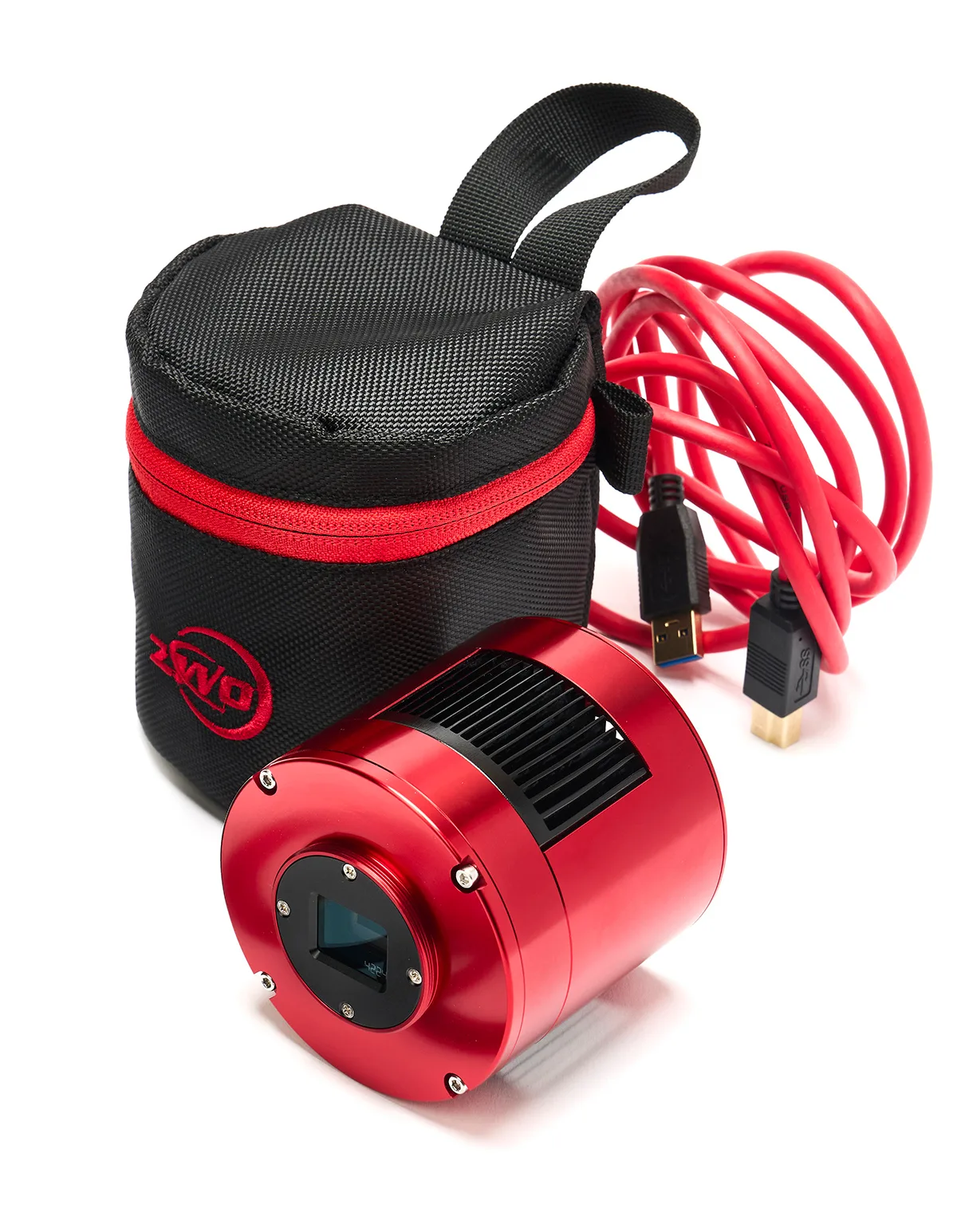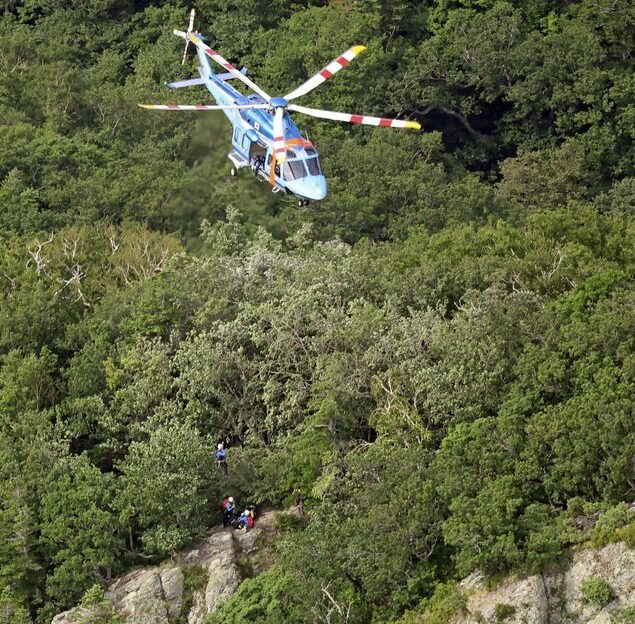Introduction
Sepsis is a life-threatening syndrome characterized by life-threatening organ dysfunction caused by a dysregulated host response to infection. It continues to pose a major global health burden, with an estimated 48.9 million cases and 11 million deaths annually, accounting for approximately 19.7% of all global mortality.1 In the intensive care unit (ICU) setting, the mortality rate of sepsis ranges from 25% to 40%, especially among patients with multiple organ dysfunction syndrome or septic shock.2
Although bacterial infections remain the most recognized cause of sepsis, viral infections are increasingly acknowledged as important triggers, especially in the context of severe respiratory illnesses. Respiratory viruses such as influenza, respiratory syncytial virus (RSV), and SARS-CoV-2 can directly cause sepsis and organ failure. Notably, viral sepsis is often complicated by secondary bacterial or fungal infections, particularly in immunocompromised individuals or those receiving immunomodulatory therapies.3 For instance, in patients with severe influenza pneumonia, the incidence of bacterial or fungal “superinfections” can reach 34.5%, significantly increasing in-hospital mortality from 2.4% to 22.7%.3 An 8-year retrospective study revealed that 19.6% of hospitalized influenza pneumonia patients developed secondary community-acquired bacterial infections, most commonly Staphylococcus aureus, and these patients had a markedly higher risk of septic shock, mechanical ventilation, and death (adjusted hazard ratio 2.6–7.4).4
These findings are consistent with observations from patients infected with SARS-CoV-2, where co-infections with gram-negative bacteria, Staphylococcus aureus, and opportunistic fungi such as Aspergillus are common and associated with poor outcomes.5,6 In this context, secondary infections have been shown to increase the need for mechanical ventilation, prolong ICU stay, and significantly elevate mortality. However, timely identification of these superinfections remains challenging due to overlapping clinical symptoms, leading to diagnostic delays and suboptimal therapeutic decisions.
In addition to clinical parameters, the underlying immune response patterns also differ significantly between viral and bacterial sepsis. Bacterial sepsis typically induces robust pro-inflammatory responses characterized by elevated tumor necrosis factor-α (TNF-α) and interleukin-6 (IL-6).6 In contrast, viral sepsis—particularly that caused by pneumotropic viruses like SARS-CoV-2—is associated with elevated anti-inflammatory cytokines such as interleukin-10 (IL-10), sustained lymphopenia, and a state of functional immunosuppression.7 This altered immune state, especially involving monocyte and T cell dysfunction, is believed to contribute to increased susceptibility to secondary infections and poor prognosis.8 In this context, inflammatory and immune markers such as procalcitonin (PCT), neutrophil CD64 (nCD64) and monocyte CD64 (mCD64) expression (both are high-affinity Fcγ receptors upregulated during bacterial infection and useful for early sepsis diagnosis), and Myeloid differentiation primary response 88 (MYD88) have emerged as promising tools to differentiate sepsis phenotypes and guide timely treatment decisions. Nevertheless, the immunological features that distinguish pure viral sepsis from mixed viral-bacterial sepsis remain poorly defined in clinical practice.
Therefore, this study aims to investigate the clinical characteristics, organ dysfunction, and immune response profiles—including cytokines and inflammatory markers—in ICU patients with viral sepsis, with or without secondary bacterial infection. By integrating clinical and immunological data, we seek to identify early indicators of mixed infections that may support timely antibiotic initiation and guide phenotype-driven immunomodulatory therapy. Although corticosteroids are recommended by current international guidelines for severe COVID-19, their use in patients with suspected or confirmed bacterial superinfection remains controversial. Thus, our goal is to improve outcomes by translating immune phenotyping into individualized treatment strategies across diverse viral respiratory infections. However, few studies have systematically compared the immune signatures—particularly cytokine and complement profiles—between viral and bacterial sepsis. This gap hinders our understanding of how immune dysregulation may predispose viral sepsis patients to secondary bacterial infections. Furthermore, the clinical utility of early immune phenotyping for risk stratification and guiding personalized management in viral sepsis remains largely unexplored.
Methods
Study Design, Population, and Ethical Considerations
This retrospective cohort study was conducted on ICU patients admitted to Sichuan Provincial People’s Hospital between July 2021 and December 2023. The study protocol was approved by the Ethics Committee of Sichuan Provincial People’s Hospital (Approval No. 396). All procedures were performed in accordance with the Declaration of Helsinki and local regulatory guidelines. Due to the retrospective nature of the study, informed consent was waived, and all patient data were fully anonymized to protect personal privacy.
During the study period, the vast majority of ICU-admitted viral pneumonia cases were caused by SARS-CoV-2. Adult patients (aged ≥18 years) with confirmed severe COVID-19, diagnosed by positive RT-PCR and meeting WHO criteria for severe disease, were included. These patients were initially evaluated upon ICU admission and later assigned to either the primary viral sepsis group (V group) or the viral-bacterial group (VB group), depending on microbiological test results obtained within the first 48 hours of ICU admission. To standardize diagnostic timing and reduce variability, all bronchoscopy procedures—including bronchoalveolar lavage fluid (BALF) sampling for culture and next-generation sequencing (NGS)—as well as peripheral blood cultures, were performed within 24 hours of ICU admission. Group assignment was determined retrospectively based on whether newly detected bacterial pathogens were identified during this predefined diagnostic window.
To minimize diagnostic ambiguity between viral-bacterial co-infection and nosocomial superinfection, secondary bacterial infection was operationally defined as a new bacterial isolate identified by BALF culture or NGS within 48 hours of ICU admission, in patients with a prior diagnosis of COVID-19 and no evidence of bacterial infection at the time of ICU entry. This definition, based on both timing and microbiological confirmation, aimed to distinguish secondary infections acquired during early ICU care from pre-existing co-infections.
The bacterial sepsis group (B group) consisted of patients with primary bacterial sepsis, randomly selected from the medical ICU sepsis database. To ensure comparable disease severity between groups, patients were matched on APACHE II scores at ICU admission (within ±2 points). Although matching for age and sex was attempted, it was not fully achieved due to the predominance of elderly individuals (>65 years) in the bacterial cohort.
All patients included in the study met the Sepsis-3 definition of sepsis, characterized by suspected or confirmed infection accompanied by an increase in SOFA score of ≥2 points. Exclusion criteria included age <18 years, ICU stay <24 hours, incomplete medical records, or ICU admission for non-infectious etiologies (eg, trauma, intoxication, or scheduled surgery). No patients with laboratory-confirmed non–SARS-CoV-2 viral infections were identified during the study period, likely reflecting the dominance of SARS-CoV-2 as the prevailing viral pathogen during this timeframe. Immunodeficiency was defined as the presence of hematologic or solid malignancy, receipt of long-term systemic corticosteroids (equivalent to ≥20 mg/day of prednisone for at least 14 days), or the use of immunosuppressive agents due to organ transplantation or autoimmune diseases.
A priori power analysis determined that a minimum of 64 patients per group would be necessary to detect a moderate effect size (Cohen’s d = 0.5) in intergroup comparisons of key inflammatory biomarkers, assuming a power of 80% and an alpha of 0.05. Based on this estimation, sample sizes were expanded to improve statistical robustness and minimize sampling bias. The final cohort comprised 106 patients in the V group, 65 in the VB group, and 105 in the B group, with two of the three groups exceeding the predefined sample size threshold.
Data Collection
Primary research data were retrospectively extracted from electronic health records (EHR), including patient demographics, underlying diseases, clinical outcomes, laboratory tests, and imaging reports. Laboratory data included cytokine and inflammatory markers, such as IL-2, IL-8, PCT, TNF-α, and others, routinely measured by the hospital’s clinical laboratory during the first ICU stay as part of standard care. mCD64 and nCD64 expression were measured using the Navios 10C/3L flow cytometer (Beckman Coulter, USA). EDTA-anticoagulated whole blood samples were collected within 24 hours of ICU admission and processed according to standard clinical laboratory protocols. To minimize treatment-related confounding, all biomarker samples were collected prior to the initiation of empirical antimicrobial therapy in the ICU. While some patients may have received antibiotics before referral, measurements were standardized upon ICU admission.
NGS of bronchoalveolar lavage fluid (BALF-NGS) was also performed to identify pathogens, providing accurate detection of both viral and bacterial infections. To ensure consistency in diagnostic timing, both BALF samples for culture and NGS, as well as blood cultures, were routinely collected within 24 hours of ICU admission during bronchoscopy procedures. This standardized sampling aimed to minimize variability related to the timing of specimen collection and improve comparability across patients. Microbiological data included routine cultures and NGS reports for bacteria and fungi (including Aspergillus spp. and Candida spp.). While resistance profiles were not systematically collected for all isolates, key multidrug-resistant organisms—such as carbapenem-resistant Acinetobacter baumannii (CRAB), inferred based on species identification and the ICU’s epidemiological background—were noted. All isolated Aspergillus spp. were presumed susceptible, and most Pseudomonas aeruginosa and Klebsiella pneumoniae strains were clinically considered resistant, as suggested by empirical treatment with polymyxin and carbapenems.
In addition, detailed ICU treatment data were collected, including the use of empirical or targeted antibiotics, corticosteroids, and immunosuppressive agents initiated after ICU admission. Organ support measures—such as mechanical ventilation, continuous renal replacement therapy (CRRT), and extracorporeal membrane oxygenation (ECMO)—were also documented. Clinical outcome variables included ICU and hospital length of stay, in-hospital mortality, and the need for organ support during ICU care.
Statistical Methods
Statistical analyses were conducted using SPSS (version 29.0) and Python with Pandas, NumPy, and Scikit-Learn libraries. Baseline characteristics were summarized using descriptive statistics; continuous variables were expressed as mean ± standard deviation or median (interquartile range), and categorical variables as frequencies and percentages. Group comparisons were made using independent t-tests or Mann–Whitney U-tests for continuous variables, and Chi-square or Fisher’s exact tests for categorical variables. For comparisons involving more than two groups, One-way ANOVA or Kruskal–Wallis tests were used, followed by post-hoc tests to analyze group differences.
Survival data were analyzed using Kaplan-Meier survival curves and Log rank tests. To assess the predictive power of cytokines and inflammatory markers in differentiating bacterial and viral sepsis, a multinomial logistic regression model was used, including metrics such as accuracy, precision, recall, and F1 scores. Feature selection was performed with Lasso Logistic Regression using L1 regularization, and hyperparameters were optimized through grid search.
A total of 24 immunological and inflammatory variables were included in the initial model, based on biological relevance and availability in all patients. These included cytokines (eg, IL-1RA, IL-2, IL-6, IL-10, IL-18, TNF-α, IFN-γ), acute-phase proteins (eg, CRP, PCT, α1-antitrypsin), complement factors (C3, C4), membrane markers (mCD64, nCD64, CD4, CD8), and signaling molecules (eg, MYD88). All continuous variables were standardized before modeling. The final model was internally validated using fivefold cross-validation, achieving an average classification accuracy of 70.8% (SD: 11.1%). For multiple comparisons, Bonferroni correction was applied where appropriate.
Results
General Information About Participants
This comparative analysis examined patients across various demographic and clinical parameters. The B Group had a significantly higher median age (76 years) compared to the V Group (68 years) and VB Group (69.5 years) (P = 0.007). Males were more prevalent in the V Group (73.6%) and VB Group (78.6%) compared to the B Group (55.2%) (P = 0.017). The prevalence of diabetes mellitus (DM) between the B Group and the V Group showed no statistical difference; however, the incidence of chronic respiratory diseases (CRDs) in the B Group was significantly higher than that in the V Group (p<0.001). The VB Group had a significantly higher median Sequential Organ Failure Assessment (SOFA) score (9.5) compared to the B and V Groups (7 each, P < 0.001).
For organ functions, the VB group had higher lactate dehydrogenase (LDH) levels (531 U/L) than the B (354 U/L) and V groups (392 U/L) (P = 0.009), and higher creatinine levels (103.2 µmol/L vs 79.60 µmol/L and 80.85 µmol/L, respectively, P = 0.001). Albumin levels were lower in the B and VB groups (P = 0.011). Amylase and lipase levels were significantly elevated in the VB group (P = 0.016 and P = 0.049).
There was no statistically significant difference in the effect of immune status on mortality among all infection groups (B group: 45.65% vs 54.24%, P=0.386; V group: 80% vs 84.85%, P=0.721; VB group: 100% vs 80%, P=0.288).
Mechanical ventilation was more common in the V Group (90.6%) and VB Group (89.3%) than in the B Group (76.2%) (P = 0.047). CRRT use was higher in the V Group (41.5%) and VB Group (46.4%) compared to the B Group (9.5%) (P < 0.001). ECMO and prone ventilation were also more frequent in the V and VB Groups (P < 0.001). The V Group received a higher median dosage of methylprednisolone (570 mg vs 130 mg and 180 mg, P < 0.001). Gamma globulin and thymofacine use was more common in the V and VB Groups (P < 0.001 and P = 0.002). Detailed information is provided in the Supplementary Table 1.
Differences in ICU Stay and Survival Rates Between Viral, Bacterial, and Viral-Bacterial Sepsis Patients
Clinical outcomes revealed notable differences between the three groups. Mortality was significantly higher in the V group at 83.0%, compared to 49.5% in the B group and 85.7% in the VB group (P<0.001). The median ICU stay was longer for V group patients, with a duration of 16 days (13.74–19.69) versus 11 days (11.51–14.13) in the B group and 13 days (10.93–19.14) in the VB group (P=0.027).
While the early survival rates at 7-day and 14-day were comparable among the groups (P=0.909 and P=0.701, respectively), significant differences emerged at the clinically important 28-day mark. The 28-day survival rate was significantly lower in the V group (28.3%) and VB group (14.3%) compared to the B group (50.5%) (P<0.001). Kaplan-Meier survival analysis (Figure 1) illustrated the cumulative survival rates of patients in all three groups, demonstrating distinct survival patterns over time. Although patients in the V group showed higher short-term survival rates, significant differences in long-term mortality emerged. The Log rank test confirmed that the survival discrepancy among the B group, and V group, and VB group was statistically significant (P<0.001).
|
Figure 1 Kaplan-Meier survival analysis in icu patients with different sepsis types. Kaplan-Meier survival curves comparing outcomes among patients with bacterial sepsis (B group), viral sepsis (V group), and viral-bacterial sepsis (VB group). The survival patterns showed similar trends within the first 20 days of ICU stay. After day 20, patients with viral-related sepsis (V+VB groups) had significantly lower survival rates compared to bacterial sepsis (B group) (P<0.05). The 28-day survival rates were 50.5%, 28.3%, and 14.3% for B, V, and VB groups, respectively. Although VB group showed a trend of lower survival rates than V group before day 30 and higher rates thereafter, this difference between V and VB groups was not statistically significant (P=0.159). Sample sizes: B group (n=105), V group (n=106), VB group (n=65). P-values were adjusted using Bonferroni correction for multiple comparisons among three groups.
|
Comparison of Culture Results, NGS Results, and Antibiotic Usage
Pathogen distribution patterns differed significantly between the B and V+VB groups. Blood culture positivity (BCP) rates were similar between the groups (20% vs 18.52%, P=0.8). However, lower respiratory aspirate culture positivity (LRAC+) was significantly higher in the B group (P<0.001). Catheter-related culture positivity (CRC+) was also higher in the B group (P=0.017). These findings are illustrated in Figure 2. Gram-positive bacteria (GPB) were significantly more common in the B group (P=0.001), whereas Gram-negative bacteria (GNB) were more prevalent in the V+VB group (P=0.006). Fungal infections were more frequent in the B group (P=0.002). Specific pathogens including Acinetobacter baumannii (AB) and Aspergillus fumigatus (AF) were significantly more frequent in the V+VB group (P<0.001 and P=0.002, respectively).
 |
Figure 2 Detection of pathogens in bacterial vs viral related sepsis (V+VB group). The detection rates of various pathogens were compared between bacterial sepsis (B group) and viral related sepsis (V+VB group). The detection rates for blood culture positive (BCP) and bronchoalveolar lavage fluid positive (BALF+) showed no significant differences between groups. Significantly higher detection rates were found in V+VB group for cytomegalovirus (CMV, P=0.013), Epstein-Barr virus (EBV, P=0.025), Aspergillus fumigatus (AF, P=0.002), and lower respiratory aspirate culture positive (LRAC+, P<0.001). The B group showed significantly higher rates for catheter-related culture positive (CRC+, P=0.017), Gram-positive bacteria (GPB, P=0.001), Gram-negative bacteria (GNB, P=0.006), fungi (P=0.002), and Acinetobacter baumannii (AB, P<0.001). Other pathogens including Klebsiella pneumoniae (KP), Pseudomonas aeruginosa (PA), Escherichia coli (EC), Enterococci (E), Staphylococcus aureus (SA), and Candida albicans (CA) showed no significant differences between groups (all P>0.05).
|
All patients underwent at least one time of BALF-NGS test. NGS analysis revealed distinct pathogen distributions between SARS-CoV-2-negative (SARS−) and SARS-CoV-2-positive (SARS+) patients. Cytomegalovirus (CMV), Epstein-Barr virus (EBV), and Haemophilus influenzae were more frequently detected in SARS+ patients. The detection rates of bacteria such as AB, Pseudomonas aeruginosa, and Klebsiella pneumoniae showed no significant differences between SARS− and SARS+ groups. The detailed pathogen profiles are presented in Figure 3.
 |
Figure 3 Distribution of various pathogens in SARS-negative and SARS-positive patients based on third-generation sequencing of BALF specimens.
Notes: SARS−: Patients tested negative for SARS; SARS+: Patients tested positive for SARS; * Indicates significant difference between SARS- and SARS+ groups. Pathogen Abbreviations: CMV (Cytomegalovirus), EBV (Epstein-Barr Virus), HSV1 (Herpes Simplex Virus Type 1), HSV7 (Human Herpesvirus 7), H. influenzae (Haemophilus influenzae), B. cepacia (Burkholderia cepacia), AB (Acinetobacter baumannii), PA (Pseudomonas aeruginosa), KP (Klebsiella pneumoniae), mixed G- (Mixed Gram-negative bacteria), mixed G+ (Mixed Gram-positive bacteria), TB (Mycobacterium tuberculosis), Atypical (Atypical pathogens), M. catarrhalis (Moraxella catarrhalis), S. maltophilia (Stenotrophomonas maltophilia), H. pylori (Helicobacter pylori), B. anthracis (Bacillus anthracis), E. coli (Escherichia coli).
|
Antibiotic usage patterns demonstrated significant differences between the B and V groups. In the B group, there was significantly higher use of cephalosporins (2nd/3rd generation) (P<0.001), beta-lactamase inhibitors (P=0.003), tigecycline (P<0.001), fluconazole (P<0.001), and clindamycin. In contrast, the V group showed significantly higher usage of vancomycin (P=0.029), echinocandins (P<0.001), and polymyxin (P<0.001). These antibiotic usage patterns are presented in Figure 4.
 |
Figure 4 Use of antimicrobials in bacterial versus viral sepsis groups. This figure illustrated the use of various antimicrobials in patients with bacterial sepsis (B group) and viral sepsis (V group). The antibiotics were listed on the x-axis, and the number of patients using each antibiotic was shown on the y-axis. Blue bars represent the bacterial sepsis group, and green bars represented the viral sepsis group. Significant differences in the use of specific antimicrobials between the two groups were marked with an asterisk (*). The significant differences were observed in the use of Cephalosporins (2/3 generation), Beta-lactamase inhibitors, Vancomycin, Tigecycline, Fluconazole, Echinocandin, Polymyxin, and Clindamycin.
|
In our cohort, all Acinetobacter baumannii and Klebsiella pneumoniae isolates were carbapenem-resistant (CRAB and CRKP, respectively), and molecular testing in selected CRAB cases revealed the presence of the OXA-48-like carbapenemase gene. The frequent use of polymyxins and ceftazidime-avibactam corresponded to these resistance patterns. Similarly, Pseudomonas aeruginosa isolates demonstrated multidrug resistance, although specific resistance genotypes were not systematically recorded. Notably, all Aspergillus fumigatus isolates were azole-susceptible, and no antifungal resistance was observed.
Key Inflammatory Biomarkers in Different Types of Sepsis
Table 1 shows significant differences in inflammatory biomarkers among bacterial sepsis (B group) and viral-related sepsis (V+VB group), with further subdivision into pure viral sepsis (V group) and viral followed by bacterial sepsis (VB group).
 |
Table 1 Comparison of Classic and Additional Inflammatory Biomarkers in Bacterial Versus Viral-Related Sepsis
|
In the analysis of inflammatory markers, PCT levels were higher in bacterial sepsis, with a median of 1.31 ng/mL compared to 0.35 ng/mL in viral-related sepsis (P=0.003). Within viral subgroups, the VB group showed elevated PCT levels (4.75 ng/mL) compared to the V group (0.24 ng/mL). The ESR was significantly higher in viral-related sepsis, particularly in the VB subgroup (P=0.021). Similarly, ferritin levels were markedly elevated in viral-related sepsis (P<0.001). Both mCD64 and nCD64 expression were significantly higher in the B group (P<0.001 for both markers).
Regarding cytokine profiles, TNF-α levels were significantly higher in the B group (P<0.001). In contrast, the V group showed elevated levels of several interleukins, including IL-10, IL-18, IL-8, and IL-2 (P=0.003, P<0.001, P<0.001, and P<0.001, respectively).
Additional inflammatory markers, including α1AT, MT, and MYD88, were also elevated in the V group (P=0.008, P=0.003, and P=0.023, respectively). Conversely, complement component C4 levels were lower in the V group (P=0.004).
Several inflammatory markers showed no significant differences between bacterial and viral-related sepsis groups, including CRP, IL-6, IFN-γ, IL-1β, IL-1RA, IL-4, and NC.
Predictive Modeling of Different Types of Sepsis
ROC Curve Analysis
Among the cytokines showing significant differences between groups in univariate analysis, multivariate logistic regression analysis identified mCD64 and TNF-α as independent predictors for bacterial sepsis. The mCD64 marker demonstrated excellent diagnostic performance with high sensitivity (92%) and specificity (96.2%), achieving an AUC of 0.969. TNF-α showed good diagnostic value with a sensitivity of 84.1% and specificity of 75.5% (AUC=0.74). Other variables, despite their significant differences in univariate analysis, were excluded from the final ROC model due to either insufficient discriminative ability (P>0.05) or inadequate AUC values in the multivariate analysis.
Lasso Logistic Regression Model
The logistic regression analysis revealed distinct biomarker patterns among the three sepsis groups. The significant positive and negative coefficients for each group are presented below:
In the B group, membrane and nCD64 were the strongest positive predictors, with coefficients of 1.301 and 0.946, respectively. Additional positive indicators included C4 (0.149) and IL-18 (0.263). Several markers showed negative associations, including MYD88 (−0.416), CRP (−0.306), and PCT (−0.394).
The V group demonstrated significant positive coefficients for IL-2 and MYD88 (both 0.523), C3 (0.496), and CD4 (0.191). Conversely, IL-18 (−0.292), PCT (−0.271), and TNF-α (−0.194) showed negative associations, indicating their reduced levels in viral sepsis.
The VB group exhibited a distinct pattern, with PCT showing the highest positive coefficient (0.665), followed by IFN-γ (0.505), IL-1RA (0.307), and α1AT (0.280). Both CD64 markers demonstrated strong negative associations (mCD64: −0.617, nCD64: −0.661), along with MYD88 (−0.107).
Model validation through cross-validation achieved an average accuracy of 70.8% (SD: 11.1%). This consistent performance across validation runs suggests the model’s reliability in distinguishing between sepsis types, particularly in identifying bacterial sepsis. The distinct coefficient patterns observed for each group provide potential biomarker combinations for clinical differentiation of sepsis types.
Predictive Factors for Mortality
Univariate analysis and binary logistic regression analysis identified key factors that demonstrated high predictive value for mortality in sepsis patients. The analysis revealed significant predictive values for APACHE II (AUC=0.732, 95% CI: 0.642–0.821, P<0.001), SOFA (AUC=0.719, 95% CI: 0.631–0.808, P<0.001), IL-10 (AUC=0.652, 95% CI: 0.560–0.743, P=0.003), and mechanical ventilation requirement (AUC=0.663, 95% CI: 0.563–0.764, P=0.001). All these parameters showed statistical significance (P<0.05) and achieved AUC values exceeding 0.6, indicating strong predictive capability for mortality. These indicators proved to be vital mortality predictors irrespective of sepsis type.
Discussion
Our findings demonstrated a markedly higher mortality rate in viral sepsis (84.0%), compared to bacterial sepsis (49.5%). While Kaplan-Meier survival analysis revealed higher early survival rates in the viral group, late-stage mortality increased significantly, suggesting that secondary bacterial infections may be a critical factor contributing to these deaths. These findings are consistent with previous studies reporting elevated mortality rates in virus-associated sepsis, such as COVID-19.9
A key observation was that patients in the viral and viral-bacterial groups demonstrated significantly higher SOFA scores at baseline, despite having comparable APACHE II scores to those in the bacterial group. This discrepancy may reflect the distinct pathophysiological patterns of viral sepsis, which is often characterized by severe pulmonary injury and multi-organ dysfunction, even in the early stages of critical illness. These features have been well described in SARS-CoV-2-associated cases and are increasingly recognized in other forms of severe viral pneumonia, such as influenza and RSV, which may follow similar immunopathological trajectories.
Several factors contribute to the elevated mortality observed in cases of viral sepsis. In our study, all patients were of advanced age and required intensive life-support interventions, such as mechanical ventilation, CRRT, and ECMO, which are inherently associated with increased mortality risks. Additionally, a significant proportion of patients had underlying conditions: 74 patients (39.8%) had a history of immunosuppression, and 17 patients (9.1%) had undergone solid organ transplantation. These conditions increased susceptibility to secondary bacterial infections, particularly contributing to higher mortality in the VB group. Notably, even among patients with comparable APACHE II scores, viral sepsis mortality consistently exceeded that of bacterial sepsis.
One possible explanation is the prolonged immunosuppressive state following acute viral pneumonia, which has been widely observed in severe viral infections and is known to impair host defense mechanisms against secondary pathogens10. Complement system dysfunction has also been implicated in this process. Previous studies have reported that viral sepsis, including that caused by SARS-CoV-2, is associated with hypocomplementemia—a reduction in complement functional activity—which may compromise complement-mediated bacterial clearance and increase the risk of fatal secondary infections.11 Understanding these shared pathophysiological mechanisms is essential for improving sepsis management across a broad range of viral infections, especially in the context of secondary bacterial complications.
Interestingly, NGS identified reactivation of herpesviruses such as CMV and EBV not only in the viral and VB groups, but also at an even higher rate in the bacterial group. Although these findings did not reach statistical significance (as shown in Figure 2), they suggest that herpesvirus reactivation may be a common marker of immune dysfunction across all sepsis phenotypes, rather than being specific to viral sepsis. Prior studies have shown that CMV and EBV reactivation are frequently observed in critically ill patients with sepsis and are associated with impaired cell-mediated immunity. Thus, the detection of these viruses may reflect underlying immunoparalysis, which is a shared pathophysiological feature of severe infections regardless of their etiology. This supports the hypothesis that reactivation of latent viruses can serve as an early signal of immune exhaustion, potentially preceding secondary infections and contributing to worse outcomes in susceptible patients.
The distinct inflammatory responses observed in bacterial versus viral sepsis are influenced by multiple innate immune pathways, among which the complement system plays a central role. As a key component of the innate immune response, the complement cascade mediates both pathogen clearance and immunopathology. In viral sepsis, excessive or dysregulated activation of the complement system has been implicated in driving immune dysfunction and increased vulnerability to secondary infections. For instance, in patients with SARS-CoV-2 infection, overactivation followed by depletion of complement components—a phenomenon described as hyperactivation-induced hypocomplementemia—has been linked to impaired bacterial clearance and increased risk of secondary bacterial sepsis.12 Although such findings were initially reported in the context of COVID-19, similar complement dysregulation may contribute to immune dysfunction in other severe viral infections. These observations highlight the importance of exploring targeted approaches to modulate complement activity, which may reduce the risk of secondary infections and improve outcomes in patients with viral sepsis more broadly.
The distinct inflammatory responses observed in bacterial versus viral sepsis are critical determinants for accurate diagnosis and appropriate treatment selection. Our study particularly emphasizes the differences in cytokine profiles between these two types of sepsis, with special attention to interleukin patterns. Although this study focused primarily on SARS-CoV-2-related sepsis, similar immune dysregulation—including elevated IL-10, IL-2, and MYD88—has been reported in other severe viral infections such as influenza and RSV. Both pathogens can induce profound immune activation followed by compensatory suppression, particularly in critically ill hosts. Prior research has highlighted comparable cytokine perturbations and complement pathway involvement in severe influenza and RSV pneumonia. Therefore, the immune phenotypes observed here may reflect a broader pattern of host response in respiratory viral sepsis. These findings suggest the potential applicability of our diagnostic and prognostic framework to other viral etiologies, pending further validation in pathogen-specific cohorts.
Although IL-6 levels were numerically higher in bacterial sepsis patients compared to viral sepsis patients (P=0.235), consistent with findings by Garduno et al,4 the literature documents elevated IL-6 levels in severe viral infections, particularly in COVID-19-associated cytokine storms.10,12 This suggests the need for cautious administration of IL-6 inhibitors in viral sepsis. Notably, our study did not demonstrate significant differences in IL-6 levels between groups, indicating that other cytokines may play more crucial roles in determining viral sepsis outcomes. This result may be partially attributable to the limited sample size or variability in the timing of cytokine measurements, which could have influenced statistical significance.
IL-10 levels were significantly elevated in viral sepsis patients (P=0.003), aligning with previous research demonstrating IL-10’s role in immune response modulation and tissue protection during viral infections.13 IL-10, primarily secreted by monocytes/macrophages and T2 cells, functions as an immunosuppressive cytokine through multiple mechanisms: 1) inhibition of T-cell proliferation and function, 2) suppression of pro-inflammatory cytokine release, and 3) promotion of immunosuppressive cell proliferation, including regulatory T cells (Tregs) and myeloid-derived suppressor cells (MDSCs)14. However, IL-10’s anti-inflammatory properties may contribute to an immunosuppressive state, potentially increasing susceptibility to secondary infections and mortality risk in viral sepsis patients.
Our study demonstrated significantly elevated IL-2 levels in viral sepsis patients (P<0.001), consistent with Hamilton et al’s findings regarding IL-2’s essential role in T-cell activation during viral infections.15 These elevated IL-2 levels indicate an active adaptive immune response, which is crucial for viral replication control.
MYD88, an adaptor protein essential in infection-related immune responses, showed significantly higher levels in viral sepsis (P=0.023). This aligns with its established role in antiviral signaling through toll-like receptor (TLR) pathways, particularly endosomal TLR7/8/9, which activate NF-κB and interferon pathways to drive cytokine production.16,17 The group-specific MYD88 expression may thus reflect distinct innate immune activation patterns across sepsis phenotypes.
The observed cytokine profiles suggest that combining markers such as IL-2, MYD88, IL-10, and IFN-γ may enhance the differentiation between bacterial and viral sepsis. Recent studies have explored various diagnostic approaches, including machine learning models based on routine blood tests, which have demonstrated superior accuracy compared to traditional markers like C-reactive protein.18 Furthermore, three-protein host-response assays and gene expression-based tests have shown greater efficacy than procalcitonin.19,20 Among these, Fc gamma RI (CD64), a high-affinity receptor for IgG expressed on activated neutrophils, plays a pivotal role in identifying bacterial infections by mediating phagocytosis and antibody-dependent cellular cytotoxicity. Studies have shown that elevated CD64 expression is strongly associated with bacterial rather than viral sepsis, making it a valuable adjunctive marker in differential diagnosis. In our cohort, although CD64 was not uniformly measured, prior evidence supports its integration into multimodal diagnostic algorithms alongside cytokine profiling.21,22
Given the fundamental role of cytokines in sepsis pathophysiology, cytokine inhibitors represent a promising therapeutic strategy, particularly in modulating the characteristic hyperinflammatory response. The therapeutic potential of specific cytokines, such as IL-2, IL-10, and MYD88, either individually or in combination, merits further investigation. Beyond aiding diagnosis, immune phenotyping—particularly cytokine and receptor expression profiling—holds considerable promise in guiding individualized immunomodulatory therapy. For instance, elevated IL-10 may identify patients at risk for secondary infections who might benefit from immune-stimulatory approaches, whereas dominant IL-6 or IFN-γ patterns may support selective anti-inflammatory treatment. Integrating immune phenotypes into sepsis classification schemes could thus refine treatment strategies and inform targeted antimicrobial timing, especially in patients with overlapping viral-bacterial syndromes.
Our findings underscore the distinct inflammatory responses characterizing bacterial and viral sepsis. Understanding these differences is essential for developing targeted diagnostic and therapeutic approaches. Future research should focus on validating these findings and identifying additional biomarkers to enhance sepsis management. Emphasis should be placed on the timely detection and treatment of secondary bacterial infections in viral sepsis patients, enabling more effective differentiation between VB and V groups.
Our analysis revealed that patients in both V and VB groups showed higher susceptibility to secondary GNB infections, with Acinetobacter baumannii frequently isolated from cultures. This pattern corresponded with significantly higher polymyxin utilization (33.3% vs 11.4%, P<0.001), consistent with previous studies documenting high prevalence and adverse outcomes of multidrug-resistant AB infections in ICU patients with viral sepsis.22,23
While previous research has documented frequent GPB co-infections in COVID-19 patients, including Staphylococcus aureus, Haemophilus influenzae, and Streptococcus pneumoniae,24 our study found significantly fewer secondary GPB infections in viral sepsis cases (8 cases compared to 31 in the B group, P=0.001). Notably, despite lower GPB infection rates, vancomycin prescription was significantly higher in the V and VB groups (27.2% vs 14.3%, P=0.029). This increased vancomycin usage may have contributed to renal impairment, correlating with the observed higher frequency of CRRT requirements in the V group.
Aspergillus infections demonstrated higher prevalence in the V and VB groups, aligning with previous findings in ICU with several viral pneumonia.25 The co-occurrence of multidrug-resistant GNB and Aspergillus species infections in severe viral pneumonia patients has been associated with increased mortality rates and extended hospital stays.26
Intervention timing and appropriateness, particularly regarding antibiotic administration, emerge as critical factors in patient outcomes. Delayed recognition of secondary bacterial infections or postponed initiation of appropriate treatments may contribute to poorer outcomes in viral sepsis cases. The presence of viral pathogens can obscure the clinical presentation, complicating timely diagnosis and treatment of concurrent bacterial infections. These diverse pathogen profiles and antibiotic utilization patterns emphasize the importance of prompt antimicrobial therapy adjustments based on culture and NGS results. Key priorities in effective sepsis management include minimizing unnecessary antibiotic exposure while optimizing patient outcomes.
Our study has several notable limitations. The retrospective, single-center design inherently introduces potential selection and information biases, potentially limiting the generalizability of our results. Unlike prospective studies, this design restricts our ability to modify exposure factors, allowing only observation of historical data without evaluating specific intervention effects. Despite employing rigorous statistical methods, these inherent limitations may affect the study’s validity.
Significant differences in baseline characteristics between groups might have influenced our findings. The bacterial sepsis group demonstrated a significantly higher median age (76 years compared to 68 years in the viral group and 69.5 years in the viral-bacterial group, P=0.007) and a lower proportion of male patients (55.2% versus 73.6% in viral group and 78.6% in viral-bacterial group, P=0.017). SOFA scores varied significantly among groups (P<0.001), with the viral-bacterial group showing notably higher scores (m=9.5) compared to both bacterial and viral groups (both m=7). These baseline disparities may confound the interpretation of mortality and clinical outcomes.
Although we standardized biomarker collection within 24 hours of ICU admission and prior to empirical antimicrobial therapy initiation in the ICU, we acknowledge that some patients may have received antibiotics or immunomodulatory agents before referral. These treatments could have influenced inflammatory markers such as IL-6 and PCT, introducing bias in cytokine profiling and limiting the interpretation of immune phenotypes. Furthermore, as all measurements were based on single time-point sampling rather than serial assessments, our study could not capture the temporal dynamics of immune responses, which may be relevant for patient stratification and prognosis.
Moreover, the number of patients included in each group was uneven, particularly with fewer patients in the viral and viral-bacterial groups. This imbalance limited subgroup analyses and reduced statistical power, potentially affecting the robustness of immune marker comparisons. In addition, the presence of patients with immunosuppression (42.8% in the bacterial group, 37.7% in the viral group, and 28.6% in the viral-bacterial group) and organ transplant recipients (9.1%) may have influenced host responses and outcomes, further complicating interpretation.
Despite the use of advanced statistical techniques such as Lasso logistic regression and grid search optimization, residual confounding cannot be excluded. Treatment differences—such as the more frequent use of mechanical ventilation, CRRT, and ECMO in viral and viral-bacterial groups—may reflect both disease severity and therapeutic decisions, introducing potential bias.
Furthermore, as a retrospective study, we were unable to fully trace antibiotic exposure prior to ICU admission. Although all biomarker samples were obtained before new ICU treatments were started, residual effects of prior antimicrobial therapy could not be excluded and may have influenced biomarker levels.
Future prospective multicenter studies involving larger and better-balanced cohorts are necessary to validate our findings and reduce potential residual bias. Additionally, further research should investigate whether immune phenotyping can be applied across diverse viral sepsis etiologies—such as those caused by influenza, RSV, and other emerging respiratory viruses—in order to support the development of more generalized diagnostic models and evidence-informed supportive management strategies.
Conclusion
This study reveals substantial clinical and immunological distinctions between viral and bacterial sepsis. In our SARS-CoV-2 sepsis cohort, patients exhibited higher SOFA scores and increased levels of LDH and creatinine, indicating more severe organ dysfunction despite comparable APACHE II scores. These patients also required more intensive supportive therapies, including mechanical ventilation, CRRT, ECMO, and prone positioning, reflecting greater disease severity.
In addition to clinical severity, our findings highlight distinct immune signatures associated with SARS-CoV-2-related sepsis, including elevated levels of IL-2, IL-10, and MYD88. These cytokine profiles may serve as useful biomarkers for differentiating viral sepsis from mixed infections and for identifying patients at higher risk of secondary bacterial complications.
These insights underscore the importance of developing diagnostic frameworks tailored to the specific etiologies of sepsis. Although our findings are limited to SARS-CoV-2-related sepsis, they provide a window into the broader immunopathological features potentially shared across viral sepsis syndromes. Future investigations should evaluate whether cytokine-based immune profiling can aid in risk stratification and guide supportive care decisions in viral infections beyond COVID-19. Multicenter validation is warranted to substantiate these findings and to inform the design of more personalized diagnostic and monitoring strategies.
Highlights
1. Immune signatures involving IL-2, IL-10, MYD88, and PCT effectively differentiate pure COVID-19 sepsis from secondary bacterial superinfection.
2. COVID-19 patients with immunosuppression or organ transplantation are at increased risk of developing secondary bacterial sepsis.
3. Delayed recognition of bacterial superinfection contributes to increased ICU mortality in severe COVID-19.
4. Distinct immune phenotypes and organ dysfunction profiles support phenotype-guided therapeutic strategies in COVID-19-associated sepsis.
Abbreviations
COVID-19, Coronavirus Disease 2019; ICU, Intensive Care Unit; SOFA, Sequential Organ Failure Assessment; LDH, lactate dehydrogenase; IL-2, interleukin-2; MYD88, Myeloid Differentiation Factor 88; IL-10, interleukin-10; IFN-γ, interferon-gamma; CRRT, Continuous renal replacement therapy; ECMO, Extracorporeal membrane oxygenation; MOF, multiple organ failure; TNF-α, tumor necrosis factor-α; IL-6, interleukin-6; WHO, World Health Organization; RT-PCR, Reverse transcription PCR; MICU, Medical Intensive Care Unit; APACHE II, Acute Physiology and Chronic Health Evaluation II; ELISA, enzyme-linked immunosorbent assay; mCD64, monomeric cluster of differentiation 64; nCD64, neutrophil cluster of differentiation 64; α1AT, α1-antitrypsin; MT, metallothionein; IL-1β, interleukin-1β; IL-4, interleukin-4; NGS, Next-generation sequencing; BALF-NGS, bronchoalveolar lavage fluid-NGS; DM, diabetes mellitus; CRDs, chronic respiratory diseases; BCP, Blood culture positivity; LRAC+, lower respiratory aspirate culture positivity; CRC+, Catheter-related culture positivity; GPB, Gram-positive bacteria; GNB, Gram-negative bacteria; AB, Acinetobacter baumannii; AF, Aspergillus fumigatus; KP, Klebsiella pneumoniae; PA, Pseudomonas aeruginosa; EC/E. coli, Escherichia coli; E, Enterococci; SA, Staphylococcus aureus; CA, Candida albicans; SARS-, SARS-negative; SARS+, SARS-positive; CMV, Cytomegalovirus; EBV, Epstein-Barr Virus; HSV1, Herpes Simplex Virus Type 1; HSV7, Human Herpesvirus 7; H. influenzae, Haemophilus influenzae; B. cepacia, Burkholderia cepacia; mixed G-, Mixed Gram-negative bacteria; mixed G+, Mixed Gram-positive bacteria; TB, Mycobacterium tuberculosis; M. catarrhalis, Moraxella catarrhalis; S. maltophilia, Stenotrophomonas maltophilia; H. pylori, Helicobacter pylori; B. anthracis, Bacillus anthracis; PCT, Procalcitonin; ESR, Erythrocyte sedimentation rate; IL-18, interleukin-18; CRP, C-reactive protein; IL-1β, interleukin-1β; IL-1RA, interleukin-1 receptor antagonist; NC, neutrophil count; MV, mechanical ventilation; CD64, Fc gamma RI; CD35, Complement Receptor 1; MYO, myoglobin; cTnI, cardiac troponin I; Cr, creatinine; Alb, albumin.
Clinical Trial Registry Number
National Clinical Trial (NCT) number NCT06491966.
Data Sharing Statement
All data supporting the findings of this study are included in this manuscript and its Supplementary Information Files. Due to privacy and ethical restrictions, additional datasets used in this study are not publicly available but can be accessed upon reasonable request from the corresponding author, subject to necessary institutional and ethical approvals.
Ethics Approval and Consent to Participate
This study was conducted in strict accordance with the principles outlined in the Declaration of Helsinki and relevant guidelines and regulations. The study was approved by the Ethics Committee of Sichuan Provincial People’s Hospital (Approval No. 396). Due to the retrospective nature of this study, informed consent was waived for the use of de-identified patient data. Patient confidentiality and privacy were diligently protected throughout the research process. All data were anonymized to ensure that no personal identifying information was accessible.
Consent for Publication
All authors have reviewed the final version of the manuscript and consent to its publication. This manuscript does not include any identifiable details of participants. Due to the retrospective nature of the study, informed consent was not obtained from participants, but all data were anonymized to ensure privacy and confidentiality.
Author Contributions
Xiong L and Tang H contributed equally to this work and share first authorship. They were responsible for study conceptualization, methodology design, data analysis, and drafting of the initial manuscript. Xie Q and Fang H participated in data acquisition and contributed substantially to data analysis and interpretation. Jing D assisted in data collection and interpretation of results. Chen L, as the corresponding author, supervised the entire project, guided the methodological design, and critically revised the manuscript for important intellectual content. She was also responsible for funding acquisition and provided final approval of the version to be published. All authors read and approved the final manuscript and agree to be accountable for all aspects of the work.
Funding
This work was supported by the Sichuan Provincial Health Commission Scientific Research Project Fund (Grant No. 21PJ081); and the Sichuan Provincial Cadre Health Research Project Fund (General Subject Program 2021-207).
Disclosure
The authors declare no competing financial and/or non-financial interests in relation to this work as defined by Nature Research.
References
1. Rudd KE, Johnson SC, Agesa KM, et al. Global, regional, and national sepsis incidence and mortality, 1990-2017: analysis for the global burden of disease study. Lancet. 2020;395(10219):200–211. doi:10.1016/S0140-6736(19)32989-7
2. Fleischmann-Struzek C, Rudd K. Challenges of assessing the burden of sepsis. Med Klin Intensivmed Notfmed. 2023;118(Suppl 2):68–74. doi:10.1007/s00063-023-01088-7
3. Wu L, Liu S, Zhao J, Zhou Q, Huang Y, Lu X. Respiratory viruses and bacterial/fungal superinfections in hospitalized adults with community-acquired pneumonia: clinical features, outcomes, and risk factors. Authorea Preprints. 2020. doi:10.22541/au.159248773.32231976
4. Teng F, Liu X, Guo S, et al. Community-acquired bacterial co-infection predicts severity and mortality in influenza-associated pneumonia admitted patients. J Infect Chemother. 2019;25(2):129–136. doi:10.1016/j.jiac.2018.10.014
5. Gerver SM, Guy R, Wilson K, et al. National surveillance of bacterial and fungal coinfection and secondary infection in COVID-19 patients in England: lessons from the first wave. Clin Microbiol Infect. 2021;27(11):1658–1665. doi:10.1016/j.cmi.2021.05.040
6. Ebrahim GJ. Sepsis, septic shock and the systemic inflammatory response syndrome. J Trop Pediatr. 2011;57(2):77–79. doi:10.1093/tropej/fmr022
7. Brady J, Horie S, Laffey JG. Role of the adaptive immune response in sepsis. ICMx. 2020;8(Suppl 1):20. doi:10.1186/s40635-020-00309-z
8. Bellelli V, d’Ettorre G, Celani L, Borrazzo C, Ceccarelli G, Venditti M. Clinical significance of lymphocytopenia in patients hospitalized with pneumonia caused by influenza virus. Critical Care. 2019;23. doi:10.1186/s13054-019-2608-1
9. Shappell CN, Klompas M, Chan C, et al. Use of electronic clinical data to track incidence and mortality for SARS-CoV-2-associated sepsis. JAMA Network Open. 2023;6(9):e2335728. doi:10.1001/jamanetworkopen.2023.35728
10. Chidambaram V, Tun NL, Haque WZ, et al. Factors associated with disease severity and mortality among patients with COVID-19: a systematic review and meta-analysis. PLoS One. 2020;15(11):e0241541. doi:10.1371/journal.pone.0241541
11. Ali YM, Lynch NJ, Khatri P, et al. Secondary complement deficiency impairs anti-microbial immunity to Klebsiella pneumoniae and Staphylococcus aureus during severe acute COVID-19. Front Immunol. 2022;13:841759. doi:10.3389/fimmu.2022.841759
12. Afzali B, Noris M, Lambrecht BN, Kemper C. The state of complement in COVID-19. Nat Rev Immunol. 2022;22(2):77–84. doi:10.1038/s41577-021-00665-1
13. Han Q, Guo M, Zheng Y, et al. Current evidence of interleukin-6 signaling inhibitors in patients with COVID-19: a systematic review and meta-analysis. Front Pharmacol. 2020;11:615972. doi:10.3389/fphar.2020.615972
14. Neumann C, Scheffold A, Rutz S. Functions and regulation of T cell-derived interleukin-10. Semin Immunol. 2019;44:101344. doi:10.1016/j.smim.2019.101344
15. Hamilton SE, Schenkel JM, Akue AD, Jameson SC. IL-2 complex treatment can protect naive mice from bacterial and viral infection. J Immunol. 2010;185(11):6584–6590. doi:10.4049/jimmunol.1001215
16. Akira S, Takeda K. Toll-like receptor signalling. Nat Rev Immunol. 2004;4(7):499–511. doi:10.1038/nri1391
17. von Bernuth H, Picard C, Jin Z, et al. Pyogenic bacterial infections in humans with MyD88 deficiency. Science. 2008;321(5889):691–696. doi:10.1126/science.1158298
18. Guncar G, Kukar M, Smole T, et al. Differentiating viral and bacterial infections: a machine learning model based on routine blood test values. arXiv. 2023:2305.07877. doi:10.48550/arXiv.2305.07877
19. Srugo I, Klein A, Stein M, et al. Validation of a novel assay to distinguish bacterial and viral infections. Pediatrics. 2017;140(4):e20163453. doi:10.1542/peds.2016-3453
20. Lydon E, Henao R, Burke T, et al. Validation of a host response test to distinguish bacterial and viral respiratory infection. EBioMedicine. 2019;48:453–461. doi:10.1016/j.ebiom.2019.09.040
21. Wang X, Li ZY, Zeng L, et al. Neutrophil CD64 expression as a diagnostic marker for sepsis in adult patients: a meta-analysis. Crit Care. 2015;19(1):245. doi:10.1186/s13054-015-0972-z
22. Thiriet C, Mahjoub K, Courte G, et al. Automated measurement of neutrophil CD64 expression for diagnosing sepsis in critically ill patients. Minerva Anestesiologica. 2019;85(9):943–950. doi:10.23736/S0375-9393.19.13420-7
23. Petazzoni G, Bellinzona G, Merla C, et al. The COVID-19 pandemic sparked off a large-scale outbreak of carbapenem-resistant Acinetobacter baumannii from the endemic strains at an Italian hospital. Microbiol Spectr. 2023;11(1):e0450522. doi:10.1128/spectrum.04505-22
24. Rothe K, Spinner C, Panning M, et al. Evaluation of a multiplex PCR screening approach to identify community-acquired bacterial co-infections in COVID-19: a multicenter prospective cohort study. Infection. 2021;49(6):1079–1089. doi:10.1007/s15010-021-01720-8
25. Seitz T, Holbik J, Hind J, et al. Rapid detection of bacterial and fungal pathogens using the T2MR versus blood culture in patients with severe COVID-19. Microbiol Spectr. 2022;10(4):e0014022. doi:10.1128/spectrum.00140-22
26. Yamashita S, Martins V, Maciel E, Azeredo F. A cross-sectional study in critically ill patients affected by COVID-19 in an intensive care unit: would Acinetobacter baumannii resistant to carbapenems be the biggest villain? Access Microbiol. 2023;5(5):000542. doi:10.1099/acmi.0.000542.v3

































































